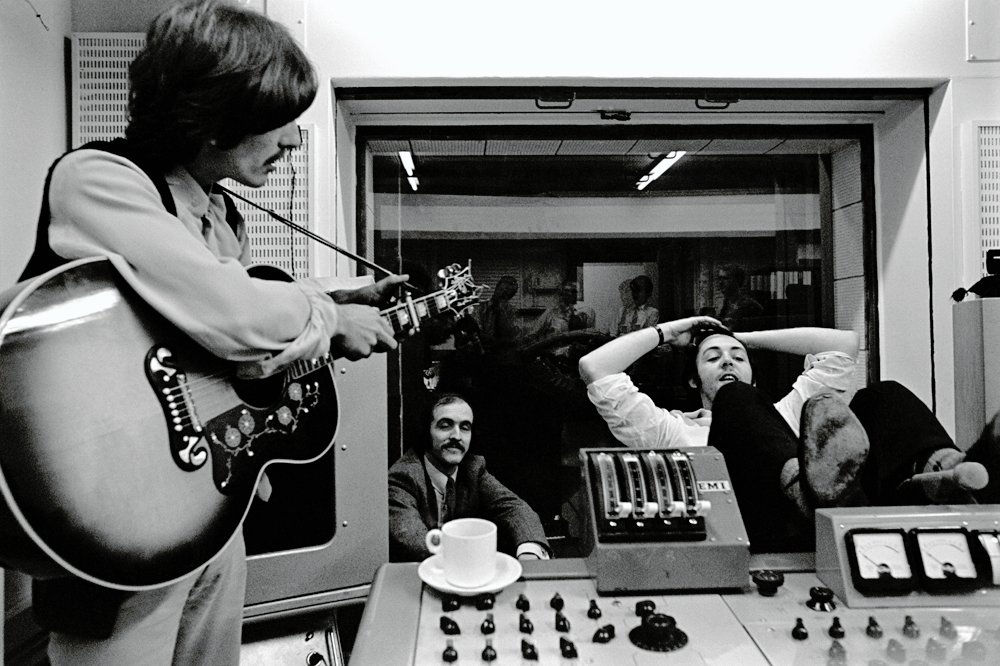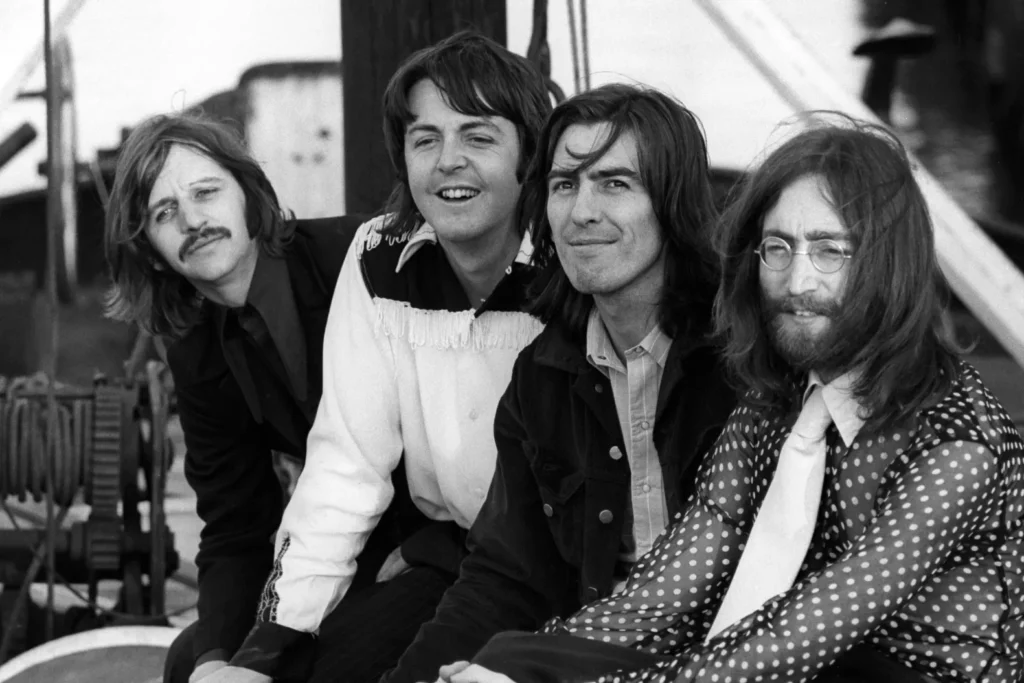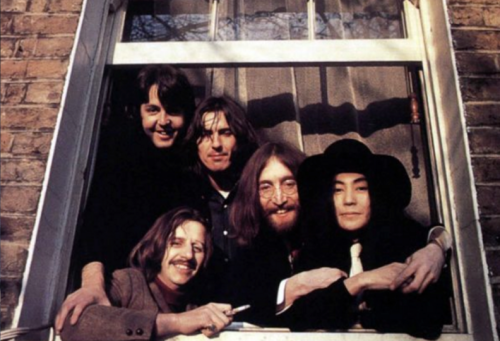The Beatles, one of the most influential and beloved bands in music history, left an indelible mark on popular culture with their groundbreaking music and innovative style. However, their sudden breakup in 1970 shocked fans worldwide and sparked a wave of speculation and controversy. Central to this debate is Yoko Ono, the avant-garde artist and wife of John Lennon, whose presence and influence have often been cited as a major factor in the band’s dissolution.
Yoko Ono’s relationship with Lennon and her increasing involvement in the band’s activities coincided with a period of growing tensions and fractures within The Beatles. Critics and fans alike have pointed fingers at her, accusing her of driving a wedge between the band members. This narrative, however, is not without its complexities and counterarguments.
The purpose of this article is to delve into the controversy surrounding Yoko Ono’s role in The Beatles’ breakup. By examining the evidence and perspectives from various sources, including the band members themselves, close associates, and music historians, we aim to provide a balanced view of her influence. Was Yoko Ono truly the catalyst for the end of The Beatles, or were there deeper, more multifaceted reasons behind their split? Through this exploration, we seek to uncover the truth behind one of rock history’s most enduring mysteries.
Background on The Beatles’ Dynamics

The Beatles, formed in Liverpool in 1960, consisted of John Lennon, Paul McCartney, George Harrison, and Ringo Starr. Their journey from local clubs to international stardom was rapid and unprecedented, fueled by their innovative music, charismatic personalities, and tight-knit camaraderie. The band’s formation was rooted in a shared passion for rock and roll and a desire to push the boundaries of popular music.
John Lennon and Paul McCartney’s songwriting partnership was the backbone of The Beatles’ success. Their complementary styles and creative synergy produced a remarkable catalog of songs that defined the 1960s. George Harrison, initially seen as the “quiet” Beatle, emerged as a significant songwriter in his own right, contributing some of the band’s most memorable tracks. Ringo Starr, with his distinctive drumming and affable personality, completed the group’s dynamic, providing a steady rhythm and occasional vocal performances.
Despite their collective brilliance, The Beatles were not immune to internal tensions. The pressures of fame, relentless touring schedules, and differing artistic visions began to strain their relationships. By 1966, the band had stopped touring, opting to focus on studio work where they could experiment and innovate without the constraints of live performance. This period produced some of their most acclaimed albums, including “Sgt. Pepper’s Lonely Hearts Club Band” and “The White Album,” but also saw increasing individualism among the members.
Changing Dynamics
The band’s dynamics were further complicated by managerial changes. Brian Epstein, their original manager, played a crucial role in shaping their image and securing their early success. His untimely death in 1967 left a void that was difficult to fill, leading to business disputes and differing opinions on the band’s future direction.
As The Beatles’ internal dynamics became more complex, Yoko Ono entered the scene. John Lennon met Yoko Ono in 1966 at an art exhibit in London, and their connection was immediate and profound. By 1968, she was a constant presence in Lennon’s life and, consequently, in the studio with The Beatles. Ono’s avant-garde approach and strong personality were new elements in the band’s already tense environment, setting the stage for the unfolding drama that many would later scrutinize.
Yoko Ono’s Entry and Influence

Yoko Ono, a Japanese avant-garde artist and musician, had already established herself in the world of experimental art long before she met John Lennon. Born in Tokyo in 1933, Ono moved to New York City in the 1950s, immersing herself in the vibrant art scene and becoming known for her unconventional and provocative works. Her art, often characterized by its conceptual nature and challenging of traditional boundaries, reflected her belief in the transformative power of imagination and the importance of individual expression.
Yoko Ono and John Lennon’s paths crossed in November 1966 at the Indica Gallery in London, where Ono was preparing for an art exhibit. Lennon was intrigued by her work, particularly a piece that invited viewers to climb a ladder and use a magnifying glass to read the word “YES” written on the ceiling. This encounter marked the beginning of a deep and complex relationship. Lennon was captivated by Ono’s artistic vision and intellectual depth, finding in her a kindred spirit who challenged and inspired him in ways he had not experienced before.
Ono’s influence on Lennon
Their relationship quickly intensified, with Ono becoming a constant presence in Lennon’s life. By 1968, she was not only his romantic partner but also his artistic collaborator. This development had a significant impact on The Beatles. Ono’s frequent presence in the recording studio was unconventional for the band, which had previously maintained a more insular working environment. Her influence on Lennon was profound, as she encouraged him to explore new artistic directions and embrace a more experimental approach to music.
Ono’s influence on Lennon extended beyond the studio. She introduced him to the world of avant-garde art and activism, broadening his horizons and inspiring him to incorporate these elements into his own work. This period saw Lennon producing more avant-garde projects, such as the “Unfinished Music” series with Ono, which included “Two Virgins” and “Life with the Lions.” These works were a stark departure from the more structured and commercially oriented music of The Beatles, reflecting a shift in Lennon’s creative focus.
On a personal level, Ono provided Lennon with a sense of companionship and intellectual partnership that he deeply valued. Their relationship, marked by its intensity and mutual admiration, also brought a sense of fulfillment and validation for Lennon. However, this closeness also led to friction within The Beatles. Band members were unaccustomed to having a non-band member present during recording sessions, and Ono’s constant presence was seen as disruptive by some.
Despite the tensions, Lennon credited Ono with revitalizing his creativity and giving him the confidence to pursue his own artistic vision. Her influence was evident in his songwriting during this period, with songs like “Julia” from “The White Album,” which subtly referenced Ono, and “The Ballad of John and Yoko,” which directly chronicled their relationship.
The Fractures Within The Beatles

The Beatles, despite their phenomenal success, were far from immune to internal tensions and conflicts. Long before Yoko Ono’s involvement, the band members grappled with various issues that strained their relationships and tested their unity. These underlying fractures set the stage for the eventual disintegration of the group, revealing that the seeds of discord were sown well before Ono’s arrival.
One of the primary sources of tension within The Beatles was the issue of management. Brian Epstein, who managed the band from their early days, played a pivotal role in their rise to fame. His guidance and business acumen provided a sense of stability and direction. However, Epstein’s sudden death in 1967 left a leadership vacuum that exacerbated existing tensions. The lack of a clear managerial figure led to disputes over the band’s future direction and business decisions, with each member having different visions and priorities.
Creative Differences
Creative differences also played a significant role in the growing discord. John Lennon and Paul McCartney, while a legendary songwriting duo, had increasingly divergent artistic visions. Lennon was moving towards more avant-garde and personal expression, heavily influenced by his relationship with Yoko Ono and his exploration of experimental music. In contrast, McCartney favored a more polished and commercial sound, which sometimes clashed with Lennon’s more radical ideas. George Harrison, too, sought greater recognition for his songwriting talents, feeling increasingly sidelined by the dominant Lennon-McCartney partnership. His frustrations culminated in the emergence of significant contributions like “While My Guitar Gently Weeps” and “Something,” which underscored his growing need for creative space.
The band’s personal ambitions further complicated matters. As individuals, The Beatles were evolving and developing interests outside the group. Lennon, inspired by Ono, delved into avant-garde projects and activism. McCartney explored his own musical projects and became more involved in the production aspects of the band’s work. Harrison’s interest in Indian music and spirituality also took him on a different path. Ringo Starr, though less vocal about his ambitions, also pursued acting and solo projects. These individual pursuits often clashed with the band’s collective goals, leading to conflicts over time and commitment.
Increasing Tensions
Significant events and disagreements marked the period leading up to the band’s eventual breakup. The recording of “The White Album” in 1968 was particularly fraught, with the sessions becoming a microcosm of the band’s internal struggles. The album’s sprawling nature and the presence of numerous solo compositions highlighted the members’ growing apart. Ringo Starr even temporarily quit the band during these sessions, feeling marginalized and unappreciated. The infamous “Let It Be” sessions in early 1969, intended to reinvigorate the band’s camaraderie by returning to their roots, only served to amplify the tensions. The filming of these sessions exposed the fractious relationships and creative disagreements to a wider audience, culminating in the infamous rooftop concert, which was their last public performance.
Management disputes further strained the band. The hiring of Allen Klein as the band’s manager, against McCartney’s wishes, created a significant rift. McCartney preferred the Eastman family, his in-laws, to manage their affairs, but was outvoted by the other members. This decision deepened the divisions within the band, highlighting the lack of consensus and mutual trust.
Analyzing the Evidence

v To comprehensively assess Yoko Ono’s role in The Beatles’ breakup, it is crucial to analyze specific incidents often cited as evidence of her negative influence. By contrasting these with other significant factors and examining primary sources such as interviews and letters, we can gain a more nuanced understanding of her impact on the band.
Incidents Cited as Evidence of Negative Influence
- The White Album Sessions: During the recording of “The White Album” in 1968, Yoko Ono’s constant presence in the studio was a stark departure from The Beatles’ usual working environment. Her involvement, including vocal contributions on tracks like “Revolution 9,” was seen by some as intrusive. The sessions were marked by heightened tensions and individualism, leading to solo recording sessions and disagreements over artistic direction. Critics argue that Ono’s presence exacerbated these tensions, contributing to the album’s fragmented nature.
- “Let It Be” Sessions: The “Let It Be” sessions in early 1969, intended to rekindle the band’s camaraderie, instead highlighted their growing rifts. Ono’s presence, often by Lennon’s side, was perceived as disruptive. The infamous incident where George Harrison temporarily quit the band, coupled with the tense atmosphere captured in the accompanying documentary, is frequently cited as evidence of Ono’s detrimental influence on the group’s cohesion.
- John and Yoko’s Avant-Garde Projects: Lennon and Ono’s collaboration on avant-garde projects such as “Two Virgins” and “Life with the Lions” marked a departure from The Beatles’ mainstream appeal. Critics argue that these projects distracted Lennon from the band and alienated his bandmates. The stark contrast between these experimental works and The Beatles’ traditional sound highlighted the growing creative divergence within the group.
Contrasting Incidents Suggesting Other Factors
- Management Conflicts: The death of Brian Epstein in 1967 left The Beatles without their guiding force, leading to managerial disputes. The hiring of Allen Klein as manager, against Paul McCartney’s wishes, created a significant rift. This conflict over business decisions and the band’s future direction was a major factor in the breakup, independent of Ono’s influence.
- Personal Ambitions and Creative Differences: Each Beatle was evolving as an artist and individual. McCartney’s desire for a more polished, commercial sound clashed with Lennon’s experimental inclinations. Harrison’s frustration with his limited role as a songwriter and Starr’s interest in acting and solo projects further strained the group. These personal and creative ambitions created a natural drift that contributed to the breakup.
- Tensions During “The White Album”: The “White Album” sessions revealed deep-seated tensions within the band. The fragmented recording process, with each member often working alone or with minimal collaboration, reflected the individualistic approach that had begun to dominate. The presence of Yoko Ono might have highlighted these tensions, but they were rooted in broader issues within the band.
Analyzing Primary Sources
- Interviews and Letters: Interviews with band members provide crucial insights. John Lennon consistently defended Ono, asserting that their relationship brought him personal and creative fulfillment. In a 1971 interview, Lennon remarked, “It wasn’t that she inspired the breakup. The Beatles were drifting apart and Yoko came into the picture at that time.”Paul McCartney’s evolving perspective is also telling. In a 2012 interview, McCartney stated, “She certainly didn’t break the group up; the group was breaking up.” His letters from the period reflect frustration with the band’s direction and managerial disputes rather than solely blaming Ono.
- Documentary Footage: The “Let It Be” documentary offers a candid look at the band’s dynamics during the sessions. While Ono’s presence is notable, the footage also captures broader conflicts, including disagreements over song arrangements and business matters. The documentary highlights that the tensions were multifaceted and not solely attributable to Ono.
The Broader Context

To fully understand The Beatles’ breakup, it is essential to place it within the broader context of the 1960s and 1970s music scene. This period was marked by significant societal changes, personal growth among the band members, and evolving music tastes that collectively influenced the band’s dynamics and eventual dissolution.
Societal Changes
The 1960s were a time of profound cultural and social transformation. The counterculture movement, with its emphasis on peace, love, and rebellion against the status quo, profoundly influenced The Beatles’ music and public personas. The band members, especially John Lennon, became vocal advocates for social change, which was reflected in their lyrics and public statements. Songs like “Revolution” and “All You Need Is Love” captured the zeitgeist of the era, aligning the band with the broader cultural shift towards questioning authority and seeking personal freedom.
However, the optimism of the 1960s gave way to a more complex and fragmented cultural landscape in the 1970s. The rise of political activism, civil rights movements, and growing disillusionment with traditional institutions created an environment of heightened tension and change. This broader societal context mirrored the internal changes happening within The Beatles, as each member began to pursue their own personal and artistic ambitions more vigorously.
Personal Growth
As individuals, The Beatles were evolving rapidly. John Lennon’s relationship with Yoko Ono and his growing interest in avant-garde art and political activism signaled a shift in his creative and personal priorities. Paul McCartney, always a driving force behind the band’s commercial success, sought to explore new musical directions and maintain the band’s relevance. George Harrison’s spiritual journey and fascination with Indian music led him to develop a distinct musical identity, culminating in his seminal solo work, “All Things Must Pass.” Ringo Starr, too, began to seek opportunities beyond the band’s framework, exploring acting and solo projects.
This period of personal growth inevitably led to diverging paths. The close-knit camaraderie that had defined The Beatles’ early years gave way to individual pursuits, making it increasingly challenging to maintain the cohesive unit that had once been their strength. The band’s internal dynamics reflected these broader personal transformations, with each member increasingly seeking to assert their own creative vision.
Evolving Music Tastes
The music scene itself was undergoing significant changes. The late 1960s and early 1970s saw the emergence of new genres and styles, from psychedelic rock to heavy metal, and the burgeoning influence of folk and country rock. Bands like The Rolling Stones, Led Zeppelin, and The Who were pushing the boundaries of rock music, while artists like Bob Dylan and Joni Mitchell were redefining the singer-songwriter genre.
The Beatles, always at the forefront of musical innovation, felt the pressure to evolve and adapt. Albums like “Sgt. Pepper’s Lonely Hearts Club Band” and “The White Album” showcased their willingness to experiment, but also highlighted their individual artistic differences. The diversity of styles on “The White Album,” from the avant-garde “Revolution 9” to the folk-inspired “Blackbird,” exemplified the band’s eclecticism but also underscored the growing divide in their musical directions.
Creative Differences
The concept of “creative differences” is often cited as a primary reason for the breakup of bands, and it is particularly relevant to The Beatles. As they matured as artists, their individual creative visions began to diverge significantly. Lennon’s experimental inclinations, McCartney’s pop sensibilities, Harrison’s spiritual and musical explorations, and Starr’s straightforward rock approach created a tapestry of conflicting styles and priorities.
These creative differences were both a source of their musical richness and a cause of internal friction. The “Get Back” sessions, intended to return to their roots with a more stripped-down sound, instead revealed deep-seated disagreements about the band’s direction. The resulting “Let It Be” album and film documented the tensions and highlighted the challenges of reconciling their divergent artistic goals.
Final Thoughts

Yoko Ono’s presence in The Beatles’ story is an important but not singular factor in their breakup. The dissolution of the band was a complex interplay of internal and external forces, and to place the blame solely on Ono is to ignore the broader context and multifaceted nature of their split. This controversy underscores broader themes of blame, creativity, and collaboration in music history, reminding us that the end of The Beatles was not the failure of one individual but the culmination of a rich and intricate narrative.
The story of The Beatles’ breakup highlights the challenges of maintaining artistic collaboration amid evolving personal and creative identities. It serves as a poignant reminder of the delicate balance required to sustain creative partnerships and the inevitability of change as artists grow and pursue new directions. As we reflect on this iconic band’s journey, we gain a deeper appreciation for the complexities of artistic collaboration and the enduring impact of their music on the world.
